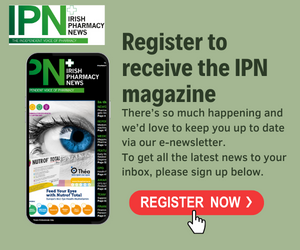More than half of the Irish public don’t know the difference between UVA and UVB radiation, according to the latest research.
A recent survey conducted by McCabes Pharmacy found that only 12.3% of people knew that UVB rays burn skin and UVA rays age skin, while 15.5% said they only vaguely knew the difference between both types of radiation.
However, a fifth (20.9%) of those that took part in the study mistakenly believed the opposite was true, while 51.3% confessed to not knowing at all.
Reportedly, overexposure to UV radiation is the cause of nearly 90% of melanomas. It can also lead to sunburn, prickly heat, rashes, and rosacea.
Patricia Boland, skin specialist at Colorescience UK, said: “Once the skin becomes sun damaged it’s irreversible and can lead to skin cancer.
“The temperature is not an indicator for when you need sunscreen. Even on cloudy summer days, 80% of UV rays can still reach the earth.”
According to Dr Nicola Ralph, consultant dermatologist at Blackrock Clinic, UVB is most intense in Ireland from May to October but UVA radiation is present all year round.
“Technically the only month in Ireland when UV radiation is not strong enough to cause sun damage to the skin is January. Therefore, I advise sunscreen to be worn to sun-exposed sites all-year-round, especially on the face, ears and backs of the hands throughout the winter,” Dr Nicola Ralph added.
Previous research found that regular sunscreen application can reduce the occurrence of melanoma by 50–73%. It’s important to choose a sun cream that protects skin from both types of UV rays.
The SPF (sun protection factor) indicates the level of protection against UVB. Sunscreen with a minimum of SPF 30 is recommended but when exposed to direct sunlight, it is advised to use SPF 50.
The star rating of sun cream—ranging from zero to five—indicates the level of protection from UVA radiation. A minimum of four stars is advised.
Lisa Byrne, superintendent pharmacist at McCabes Pharmacy, said: “If you have sunscreen already from your last holiday, check it hasn’t expired. I’ve seen so many cases where parents haven’t done this and then they or their child ends up sunburnt.”
Bottles should be stickered with the date of initial use, as these types of products usually expire within one-two years of opening.
“As well as using a broad-spectrum sunscreen that protects skin from UVA and UVB rays, use wide-brimmed hats, sunglasses and sun-protective clothing to avoid sunburn,” Lisa added.
Apply sunscreen 20 to 30 minutes prior to direct sun exposure and reapply generously every two to three hours while in the sun for maximum protection.
Patricia Boland continued: “Lift up bathing suit straps and apply sunscreen underneath them as they are bound to move around. Protect lips with an SPF 30 balm.”
Sunscreen should not be applied to babies until they are at least six months old. Before this age, keep the infants in the shade and dress them in light-weight clothing.
Dr Nicola Ralph added: “Ideally introduce the idea of applying sunscreen regularly to children from a young age so that they associate it with a routine and are less against having it applied as they grow older.
“Avoid having children in direct sun between 10am and 2pm especially when UV radiation is most intense.”
However, the use of sun cream combined with excessive sweating can block the sweat gland pores, and cause highly itchy heat rashes, also known as prickly heat.
Patricia Boland said: “To prevent heat rashes, avoid strenuous exercise when it’s warm and in hot weather use air conditioning, take cool showers and baths, wear light weight clothes and keep hydrated. Once the skin is cool and dry again avoid oil-based products.”
It is common for heat rashes to clear up within a few days but if this doesn’t happen, speak to a pharmacist who may suggest antihistamine tablets, calamine lotion or hydrocortisone cream. However, not all of these options are suitable for children or pregnant women.
Lisa continued: “If you do fall victim to sunburn, use refrigerated after-sun moisturisers while skin is damp from taking a short cold shower. Drink plenty of water. Stay out of the sun until the swelling has reduced, and wear loose-fitting clothes that won’t anger the burn.”
Seek medical attention if sunburn leads to infections, in cases of severe blistering, or if the person experiences a fever, chills or dizziness.










